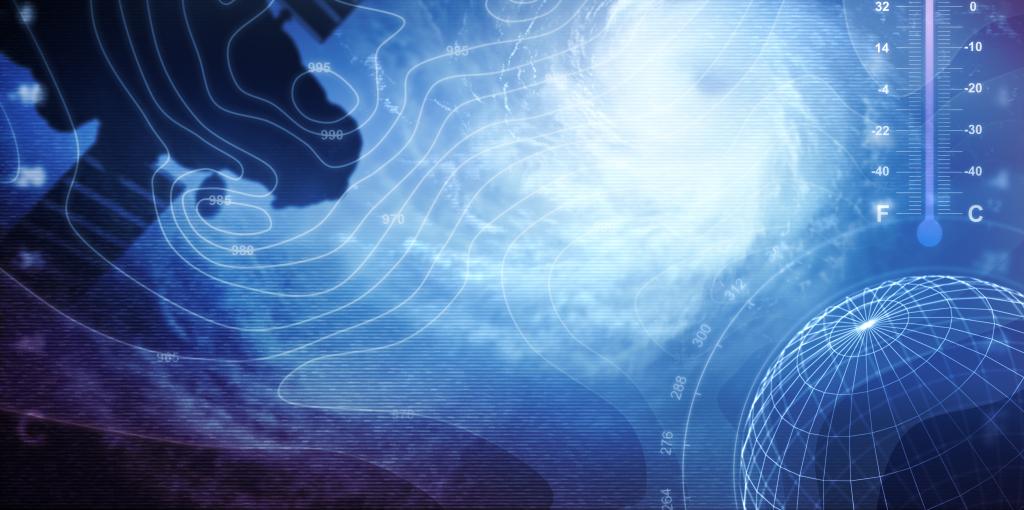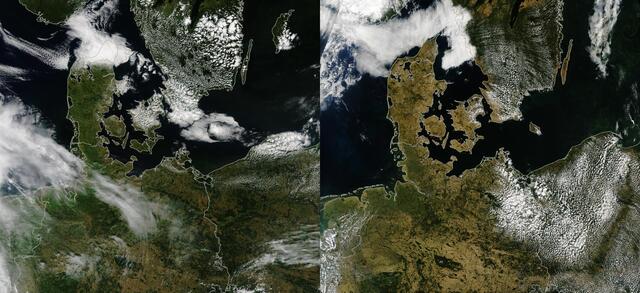Admission CTAs
Soil Conditions Inflamed Euro Drought
AOES professor Paul Dirmeyer is the lead author on a paper selected for both an Editor’s Highlight and a Viewpoint news article in the American Geophysical Union’s journal AGU Advances. The article, Land-Atmosphere Interactions Exacerbated the Drought and Heatwave Over Northern Europe During Summer 2018, uncovers the role of soil dryness in intensifying the extreme 2018 heatwave over much of Europe.
Vegetation contrast in northern Europe between normal (19 July 2017) and drought (24 July 2018) conditions. From NASA - https://earthobservatory.nasa.gov/images/92490/heatwave-turns-europe-brown , Public Domain, https://commons.wikimedia.org/w/index.php.
Northern Europe is normally relatively cool and moist in the summer. In 2018, the area endured a double-whammy of extreme heat and extreme drought. Large swathes of farmland turned brown (see figure) due to environmental stress. Sweden was struck by unprecedented wildfires, while Britain, northern Germany, and southern Sweden had summers that were among the hottest and driest on record.
Dirmeyer and co-authors used observations and a state-of-the-art reanalysis (a consistent comprehensive record of how weather and climate are changing over time) to link heat and aridity. Normally, evaporating water from soil and transpiration from vegetation moderates summertime heat. Some of the evaporated water finds its way into clouds. However, when the soil becomes dry, the sun’s energy mostly goes to raising the temperature rather than evaporation. The lack of moisture starves clouds of water, making the region sunnier and hence even hotter. Meanwhile, as the soil dries, higher air temperatures tend to draw more moisture out of the soil, causing it to get even drier. The Dirmeyer et al. paper shows that this positive feedback was occurring during summer 2018 in Northern Europe where such feedbacks between land and atmosphere had not been observed before.
The European study is part of broader efforts at George Mason to understand the connection between the land surface, heat and drought. Dirmeyer’s student David Benson was recently awarded a Mason summer research fellowship to study heat waves in North America. Dirmeyer and his GMU colleagues professor Bohua Huang and Dr. Chul-Su Shin are also working to help National Oceanic and Atmospheric Administration (NOAA) improve drought prediction.

